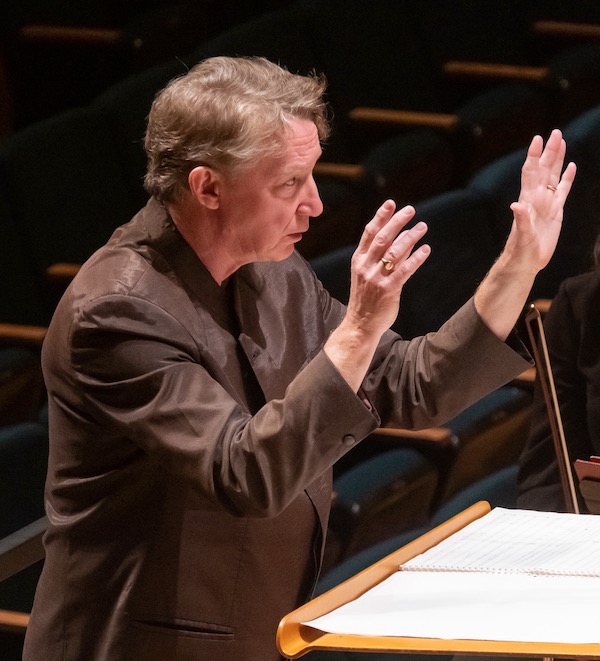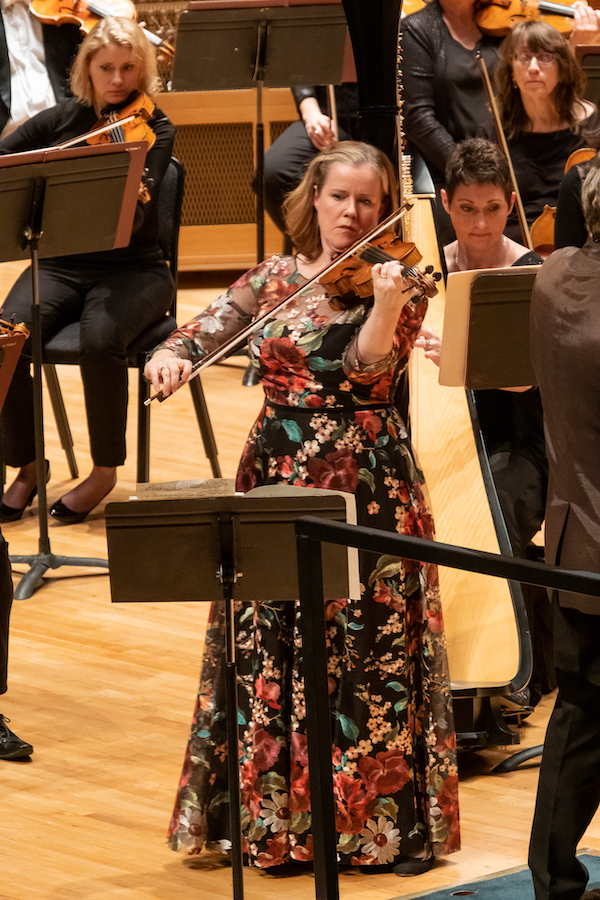Utah Symphony’s heart is in the highlands with Scottish-flavored program

The Utah Symphony’s first concert of 2023 had a Scottish accent, as Glasgow-born conductor Douglas Boyd led the orchestra in Scottish composer Helen Grime’s Near Midnight and Max Bruch’s Scottish Fantasy (with another Glaswegian, principal harpist Louise Vickerman, in a prominent supporting role to concertmaster Madeline Adkins).
After reading a few lines from Week-night Service, the D. H. Lawrence poem from which Grime drew inspiration, Boyd led the orchestra in an absorbing performance of this ten-minute piece. The prevailing mood was reflective and melancholy, but Near Midnight doesn’t depict a silent night; clear woodwinds and rustling strings suggested the stirring of birds and other creatures, and periodic brass outbursts depicted the tolling of bells.
The Scottish Fantasy was a favorite of the late Joseph Silverstein, the former longtime Utah Symphony music director and a venerable violinist. The charming, tune-packed work hasn’t been played by the orchestra in over a decade. Adkins took the stage in an elegant floral gown to rectify that absence.

The quasi-concerto is built around four Scottish folk songs, two of them brisk and vigorous, the other two heartfelt and nostalgic. Adkins’ articulation was immaculate as she dove through the intricate, rapid-fire fingerwork of the lively dance “Hey the Dusty Miller” and the rousing battle cry “Scots Wha Hae”; Boyd brought out the bagpipe-like drone of the supporting strings to particularly strong effect in the former. With smooth, songful phrasing, the soloist also brought rich interpretive depth to the sweet double-stopped harmonies of “Auld Robb Morris” and the poignant yearning of “I’m a’ Doun for Lack o’ Johnnie.” Throughout, Vickerman provided a sparkling river of sound for the solo violin to ride upon.
The evening’s other major work was Edward Elgar’s beloved Enigma Variations, whose strongest connection to Scotland might be the fan theory that the piece’s hidden countermelody bears a resemblance to “Auld Lang Syne.”
After a delicate, somewhat mysterious statement of the work’s central theme, Boyd and the orchestra led listeners through the musical portraits of the composer and thirteen of his friends and associates. The ninth variation, “Nimrod,” is the best-known, and Boyd’s reading was appropriately reverent.
Other highlights came from insouciant woodwinds depicting an actor friend in “R.B.T.”; woodwinds again, chattering jovially in Elgar’s affectionate allusion to another friend’s endearing speech impediment, in “Dorabella”; swirling strings, evoking the determined paddling of a dog that has fallen into the river, in “G.R.S.”; and soft timpani rolls, suggesting a ship engine over beating waves from the violas, in the penultimate variation.
The program will be repeated 7:30 p.m. Saturday. utahsymphony.org